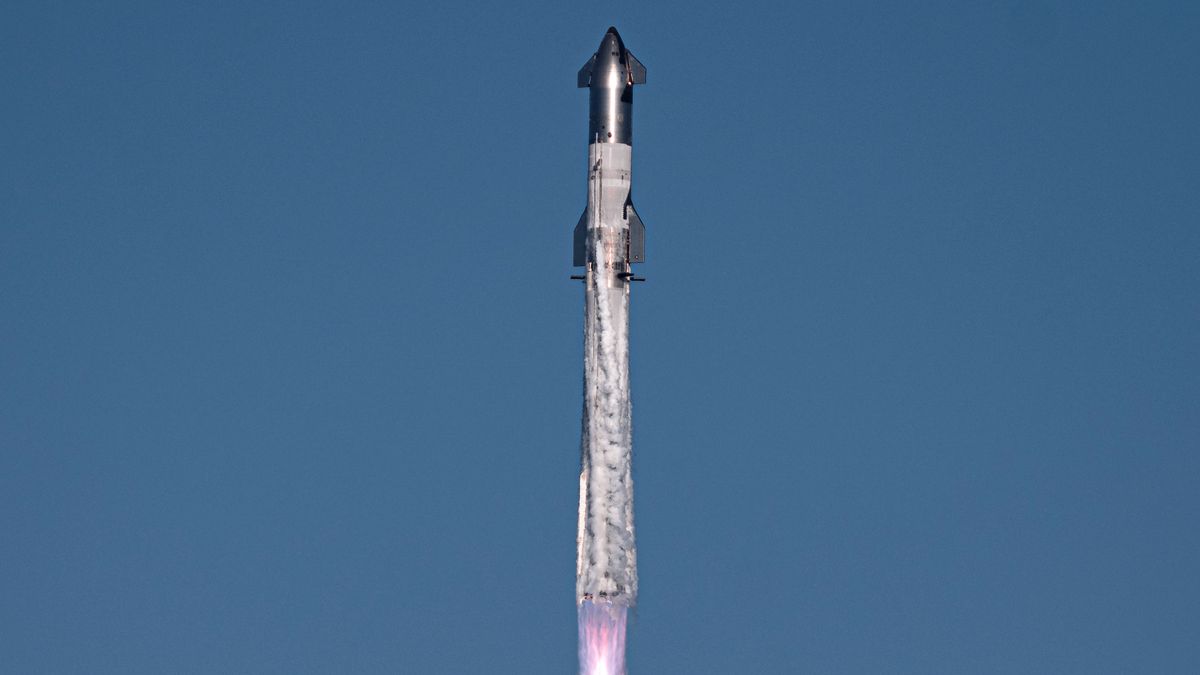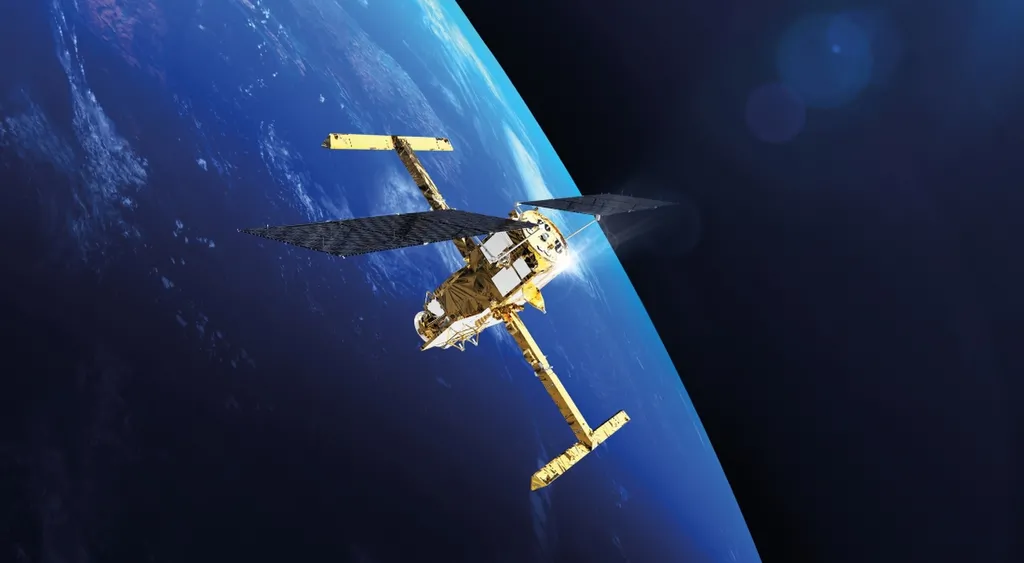SpaceX, the innovative aerospace company founded by Elon Musk, has redefined space exploration and satellite technology. One of its most groundbreaking projects is the Starlink satellite constellation, aimed at providing high-speed internet connectivity across the globe, even in the most remote regions. Recently, a stunning view from space captured the deployment of a batch of Starlink satellites, leaving viewers in awe of the technological marvels that SpaceX has achieved.
This article delves into the breathtaking moment of Starlink satellite deployment, the technology behind it, the mission’s significance, and what this means for the future of space exploration and global communication.
The Captivating View: A Moment in Space
SpaceX’s recent Starlink mission showcased a mesmerizing view of satellites being deployed from the Falcon 9 rocket. The footage, shared by SpaceX, highlighted the precision and beauty of satellite deployment as seen from space.
As the rocket reached the designated altitude of approximately 550 kilometers above Earth, the Starlink satellites were gently released into orbit. Captured against the dark backdrop of space with Earth’s curvature illuminated by sunlight, the visual was nothing short of extraordinary. The deployment sequence resembled a sparkling cluster of satellites slowly dispersing like a cosmic bouquet.
This moment was not only a testament to SpaceX’s technical prowess but also a visual reminder of humanity’s progress in space technology.
What Is Starlink, and Why Is It Revolutionary?
Starlink is SpaceX’s ambitious project to create a global broadband network using a constellation of low Earth orbit (LEO) satellites. The goal is to deliver high-speed internet to underserved and remote areas while also enhancing connectivity worldwide.
Key Features of Starlink
- Low Earth Orbit Placement
Traditional communication satellites are placed in geostationary orbits approximately 35,000 kilometers above Earth. In contrast, Starlink satellites operate at altitudes between 540 and 570 kilometers, reducing latency and improving internet speeds. - High-Speed Internet
Starlink promises speeds ranging from 50 Mbps to 250 Mbps, with latency as low as 20 milliseconds, making it comparable to traditional broadband services. - Global Coverage
By deploying thousands of satellites, Starlink aims to provide coverage to regions where laying fiber optic cables or building cell towers is impractical or economically unviable. - Scalability and Redundancy
With plans for a constellation of up to 42,000 satellites, Starlink ensures network redundancy, which means fewer service interruptions and greater reliability.
The Deployment Process: A Technical Marvel
The process of deploying Starlink satellites involves meticulous planning, advanced engineering, and flawless execution.
- Falcon 9 Rocket Launch
- The mission begins with a Falcon 9 rocket launch from a SpaceX launch pad, such as Cape Canaveral or Vandenberg Space Force Base. The reusable first stage of the Falcon 9 returns to Earth for landing, further emphasizing SpaceX’s commitment to sustainability and cost-efficiency.
- Reaching Orbit
- Once the Falcon 9 reaches the desired altitude, the second stage of the rocket positions the payload of Starlink satellites for deployment.
- Satellite Deployment Mechanism
- The satellites are stacked in a compact arrangement inside the payload fairing. Upon deployment, they are released in a controlled manner, allowing them to drift apart gradually. This separation sequence ensures that the satellites are evenly distributed in their orbits.
- Orbit Adjustment
- After deployment, each satellite uses its onboard ion thrusters to maneuver into its final orbital position. These thrusters use krypton gas as a propellant, enabling precise adjustments while being energy-efficient.
- Operational Readiness
- Once in position, the satellites activate their solar arrays and communication systems, linking with ground stations and integrating into the larger Starlink network.
Why This View Matters: Symbolism and Significance
The recent footage of Starlink satellite deployment is more than just a spectacular sight; it symbolizes humanity’s evolving relationship with space and technology.
- A New Era of Connectivity
Watching the satellites being deployed emphasizes the mission’s goal of connecting people across the globe. It is a reminder of the power of innovation to bridge digital divides. - Inspiration for Future Generations
Such visuals inspire young minds to explore careers in STEM (science, technology, engineering, and mathematics) fields, fostering the next generation of space enthusiasts and engineers. - Demonstrating Progress
The footage showcases the advancements SpaceX has made in rocket technology, satellite deployment, and space exploration. - Environmental Awareness
While the view is awe-inspiring, it also raises awareness about the growing presence of satellites in Earth’s orbit. This emphasizes the importance of responsible space usage and mitigating risks like orbital debris.
The Impact of Starlink on Global Communication
Starlink has already begun changing the landscape of internet connectivity.
- Remote Areas
Communities in remote areas, from rural regions of the U.S. to isolated islands, have reported significant improvements in internet access thanks to Starlink. - Emergency Response
During natural disasters, when traditional communication networks are disrupted, Starlink can provide emergency connectivity. For instance, it has been used in areas affected by hurricanes and wildfires. - Maritime and Aviation
Starlink is being adopted for maritime and aviation applications, offering reliable internet on ships and planes. - Economic Opportunities
Improved connectivity can boost education, healthcare, and economic activities in underserved regions, narrowing the global digital divide.
Challenges and Controversies
Despite its potential, Starlink faces several challenges:
- Light Pollution
Astronomers have raised concerns about the satellites’ brightness, which can interfere with astronomical observations. SpaceX is working to address this issue by adding sunshades to reduce reflectivity. - Space Debris
With thousands of satellites in orbit, the risk of collisions and space debris increases. SpaceX has implemented measures like deorbiting defunct satellites, but long-term sustainability remains a concern. - Regulatory Hurdles
Starlink must navigate complex regulatory landscapes in different countries to gain approvals for operating ground stations and providing services. - Competition
Starlink competes with other satellite internet providers, such as Amazon’s Project Kuiper and OneWeb, driving innovation but also intensifying market competition.
Looking Ahead: The Future of Starlink and Space Exploration
The successful deployment of Starlink satellites and the stunning footage from space highlight the incredible potential of satellite technology.
- Expansion Plans
SpaceX plans to expand its Starlink constellation to enhance coverage, improve speeds, and reduce latency further. - Mars and Beyond
Starlink is also part of SpaceX’s broader vision for interplanetary communication, potentially playing a role in Mars colonization efforts. - Collaboration and Innovation
The project is likely to inspire collaborations between private companies, governments, and research institutions, driving innovation in space exploration.
Conclusion
The mesmerizing view of Starlink satellite deployment is a reminder of humanity’s remarkable achievements in space exploration and technology. SpaceX’s vision of global connectivity is becoming a reality, with implications for communication, education, and economic development worldwide.
While challenges remain, the success of Starlink underscores the potential of combining innovation, ambition, and sustainability. For now, viewers can marvel at the stunning visuals from space, knowing they are witnessing history in the making.



